The Lapierre Crosshill is an entry-level gravel and all-road bike, designed to offer more versatility than a traditional road bike, but still with a turn of speed on tarmac.
The Crosshill has been around for a couple of years, and is available in three builds. The 2.0 opens the range, with the 3.0 and 5.0 sitting above it.
The specification might cause some buyers to look elsewhere. However, the Crosshill 2.0 is a fun lower-priced, entry-level gravel bike that makes the shortlist in our 2023 Budget Bike of the Year contest.
Lapierre Crosshill 2.0 frameset
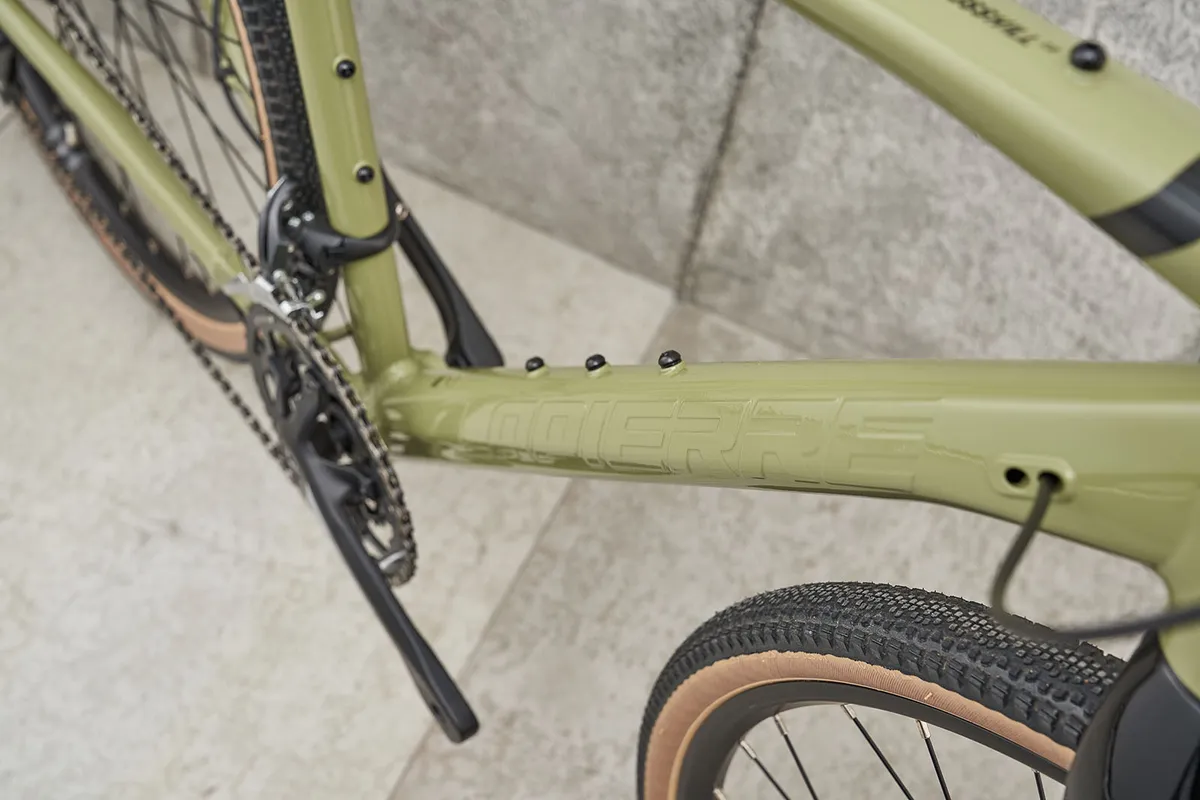
The Crosshill bike line-up shares the same ‘Supreme 5’ multi-butted aluminium frame throughout the range.
Some of its tubes are hydroformed (with claimed benefits to rigidity and performance), such as the tapered head tube and top tube.
The down tube has a generally square profile, which also broadens for a larger junction at the head tube, while the chainstays and seatstays are joined via large, chunky dropout sections.
Although the frame has a slim silhouette, the broadened sections hint towards the bike’s need for reliability and strength on tougher terrain.
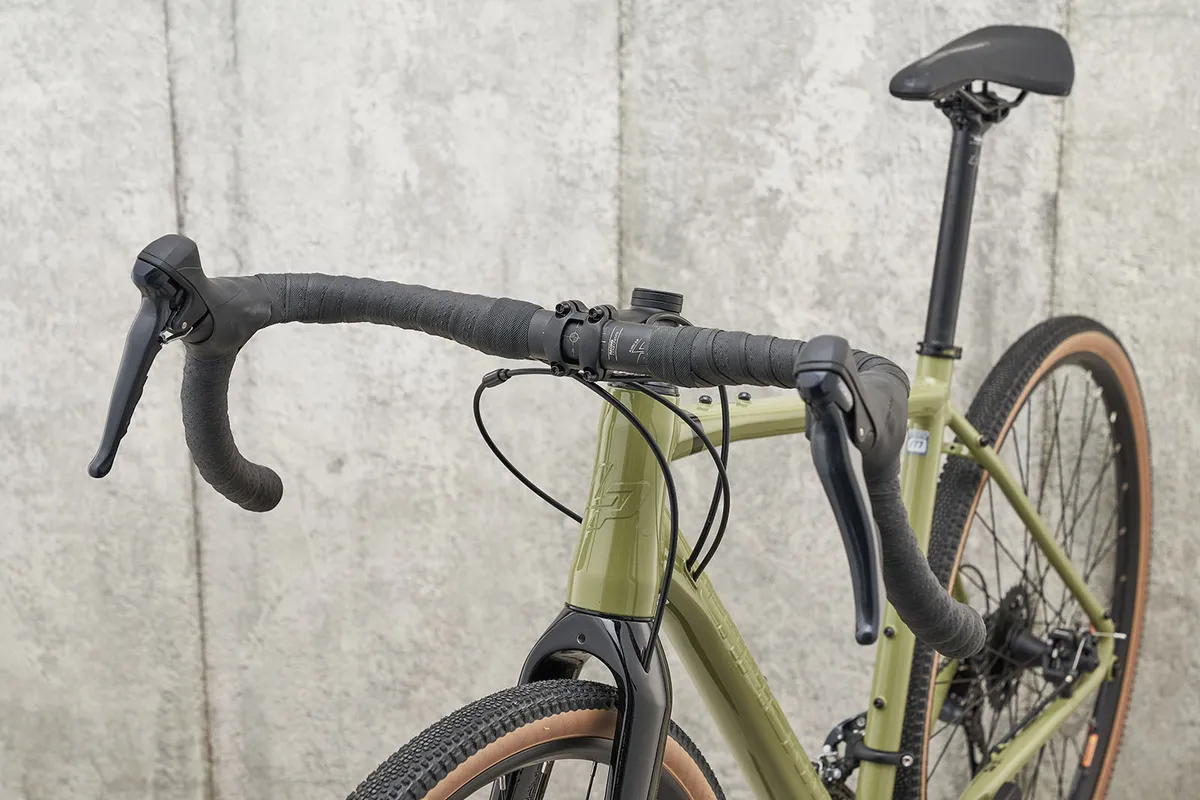
Maximum recommended tyre sizes for the Crosshill 2.0 are 700x45c (or 650x50b), but around 38-40c with full mudguards fitted.
The fork is made from carbon fibre, with a tapered aluminium steerer.
As well as mudguard mounts, the Crosshill has bosses for a third bottle cage below the down tube, accessory cages on each fork leg and a top tube bag.
The frame also comes with internal-routing capability for a dropper post.
Aesthetically, and rather unusually, the Lapierre branding on the down tube and head tube are effectively embossed onto the aluminium, rather than applied or painted on.
Lapierre Crosshill 2.0 geometry
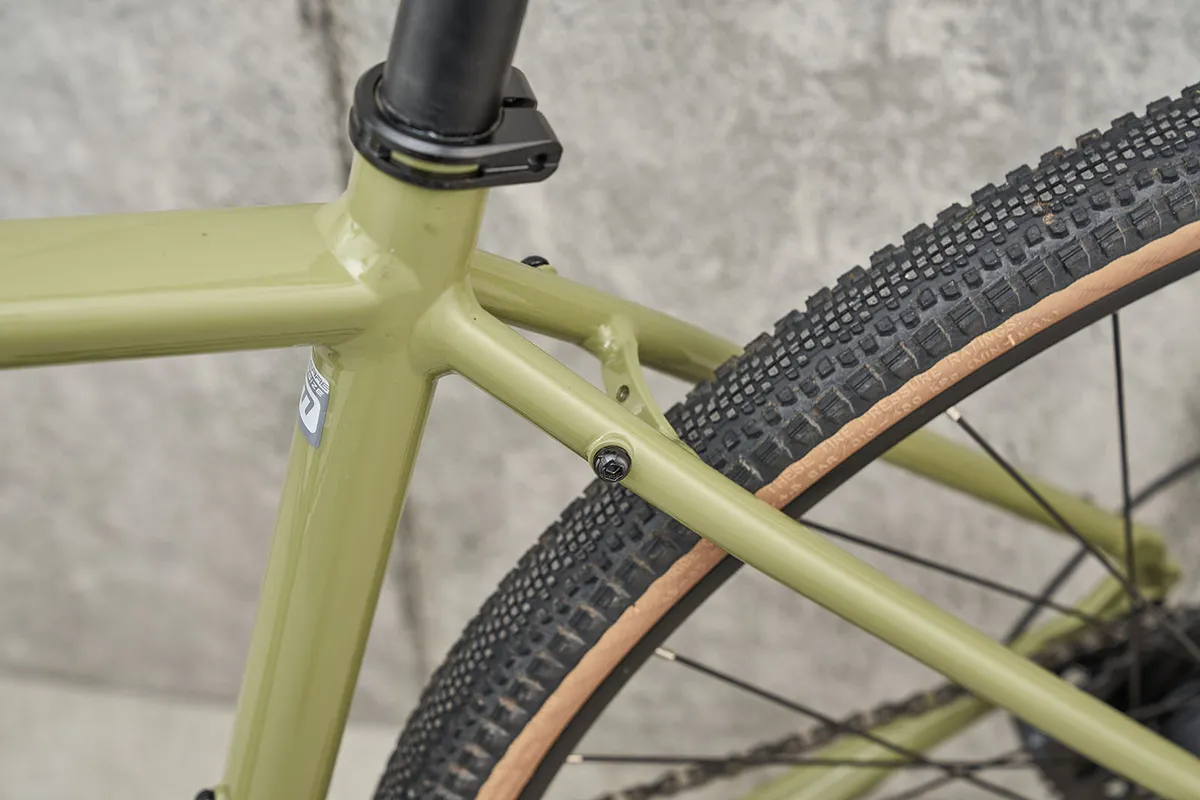
The Crosshill doesn’t have as slack a head angle as I would normally expect to find on a gravel bike.
The medium size on test features a 72.5-degree head tube angle (73 degrees for an XS size and 72 degrees for XL). Theoretically, this should make handling sharp through the front end.
Conversely, the seat tube angle is quite slack at 71 degrees.
The 150mm head tube and 561mm top tube allow for plenty of scope to stretch out and get low at the front should you desire.
| | XS | S | M | L | XL |
|---|---|---|---|---|---|
| Seat angle (degrees) | 70 | 70.5 | 71 | 71 | 71.5 |
| Head angle (degrees) | 73 | 73 | 72.5 | 72.5 | 72 |
| Chainstay (mm) | 435 | 435 | 435 | 435 | 435 |
| Seat tube (mm) | 420 | 460 | 500 | 550 | 600 |
| Top tube (mm) | 525 | 544 | 561 | 579 | 596 |
| Head tube (mm) | 90 | 120 | 150 | 180 | 210 |
| Bottom bracket drop (mm) | 75 | 75 | 75 | 75 | 75 |
| Stack (mm) | 517 | 547 | 577 | 605 | 636 |
| Reach (mm) | 366 | 376 | 378 | 388 | 389 |
Lapierre Crosshill 2.0 build
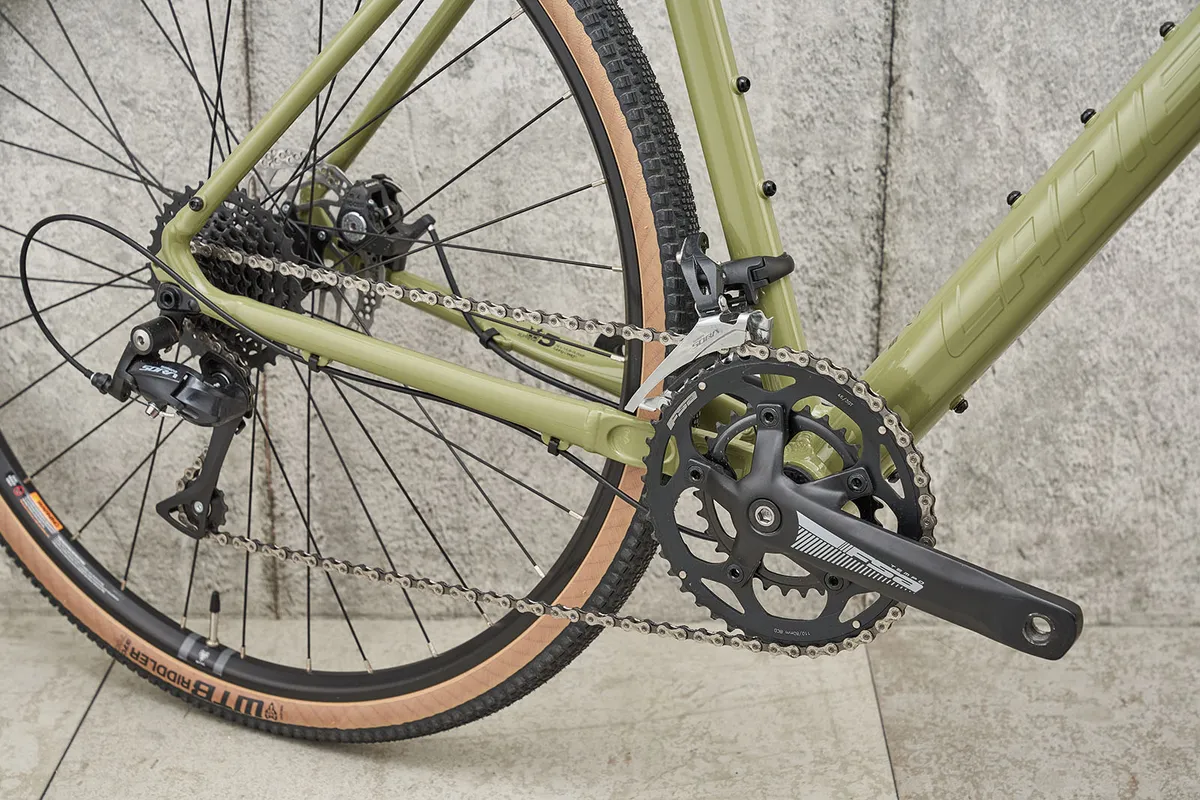
Building to a budget inevitably means some compromises, and the Crosshill 2.0 sports a Shimano Sora R3000-based drivetrain, with 9-speed shifters and derailleurs.
The crankset is an FSA Tempo Adventure model with 46/30-tooth chainrings. This spins around a threaded bottom bracket, while the cassette is a SunRace 11-34 tooth unit.
It all functions well, although some of the sprocket jumps were bigger than I’d like.
Tektro mechanical disc brakes act on the wheels, which have Lapierre-branded hubs and WTB i23 rims.
WTB supplies its Riddler tyres in a 700x37c size, set up clincher (with tubes).
The bar, stem and seatpost are all Lapierre alloy items, while the saddle is Selle Royal’s Vivo model.
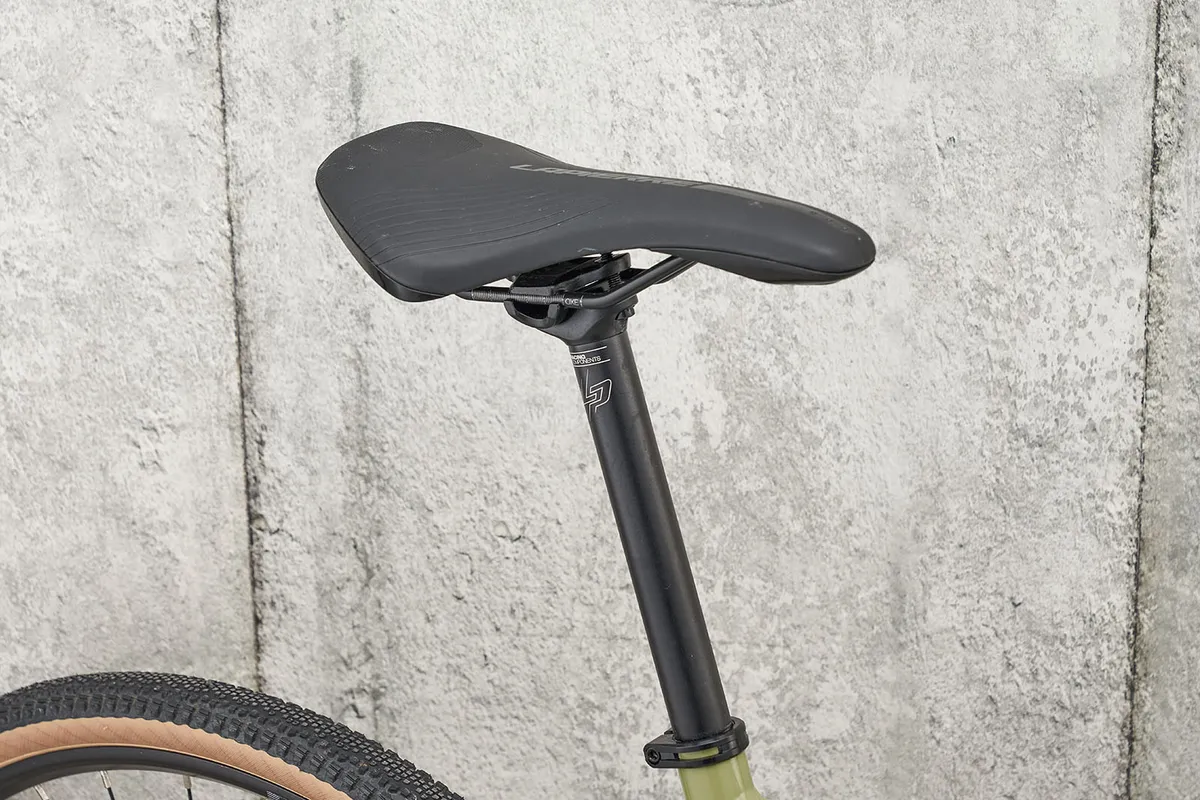
The wide 44cm handlebar eases steering inputs, while its broad, flattened tops and flared drops are very comfortable to grasp. This is helped by the grippy, well-cushioned 3mm-thick tape.
The medium-sized bike here comes with a 100mm stem. Combined with the geometry, I found this brought a long enough reach so as not to feel cramped, but also relaxed enough to handle technical terrain and longer rides with ease.
A zero-setback seatpost with the relaxed seat tube angle makes sense, and the aluminium post fitted is perfectly adequate. The Selle Royal Vivo saddle it supports has a nice shape, decent length and width, and fairly plush padding.
All together, the medium-sized frameset and components result in an 11.35kg bike.
Budget gravel bikes often come with a weight penalty, and the Crosshill’s 11.35kg mass is hard to ignore. There isn’t one obviously hefty culprit, just a sprinkling of extra grams across the board.
Lapierre Crosshill 2.0 ride impressions
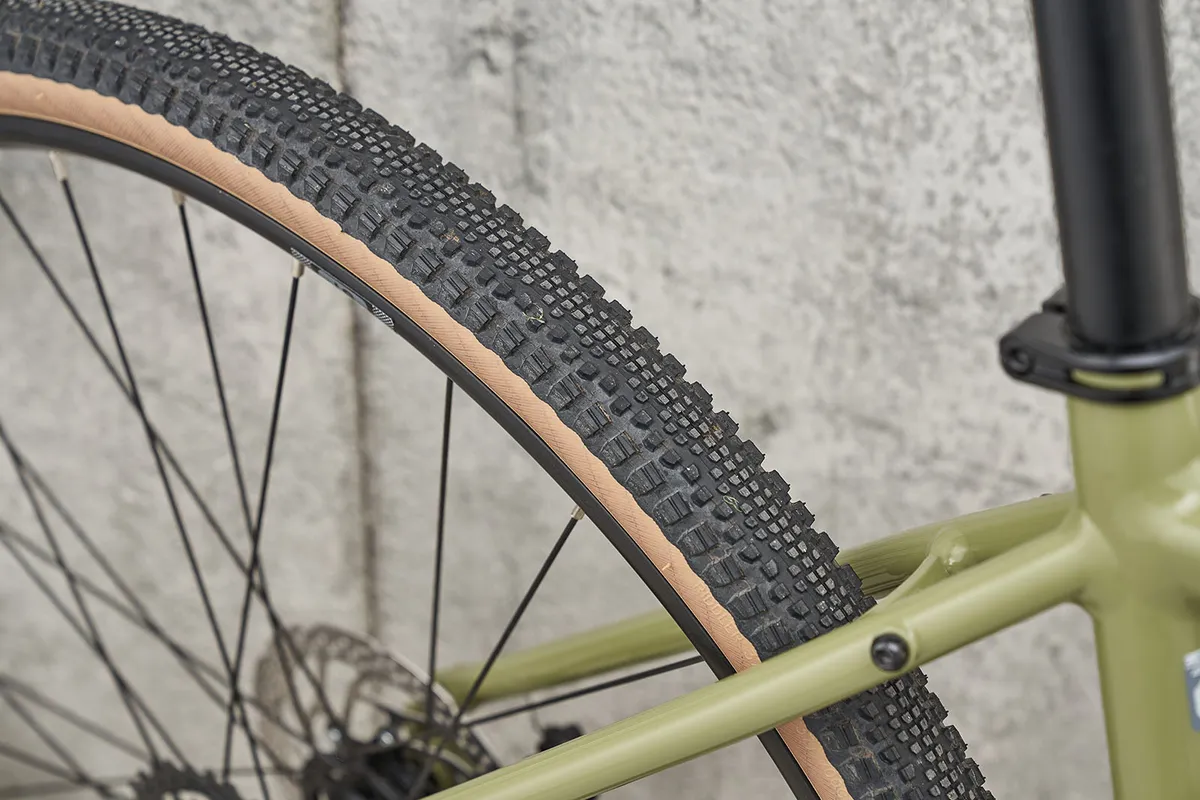
There are many elements that make up the best gravel bikes, but one could argue they boil down to these: a robust frameset with suitably predictable behaviour, generous tyre volume and low pressures, good contact points, appropriate gearing and brakes, plus options for mounting extra bits and pieces.
The Crosshill 2.0 meets many of these requirements, arguably skimps on some others and is compromised a little in some areas.
On flat terrain, the Crosshill 2.0 feels purposeful, but when the road or trail rises, it’s a different story.
When flying down into a dip and starting up the opposing rise, the instant deceleration is marked versus a bike with less mass.

Speed can be maintained on short, shallow rises, but the power increase required to manage it is significant.
That said, hoping for truly racy gravel bike performance at this price is unrealistic.
The Crosshill 2.0 is a very pleasant ride – its handling is very stable and predictable on loose surfaces, despite its steeper head angle (which normally brings sharp behaviour).
Perceptions of comfort on gravel bikes are easily (and often rightly) led by the volume and pressure of the tyres.
On the WTB i23 rims, the nominally 37mm tyres measure out at 38mm. For mixed-surface riding on tubeless tyres of that size, I’d usually aim for 30-35psi (as a 75kg rider). With tubes, I opt for around 45psi.
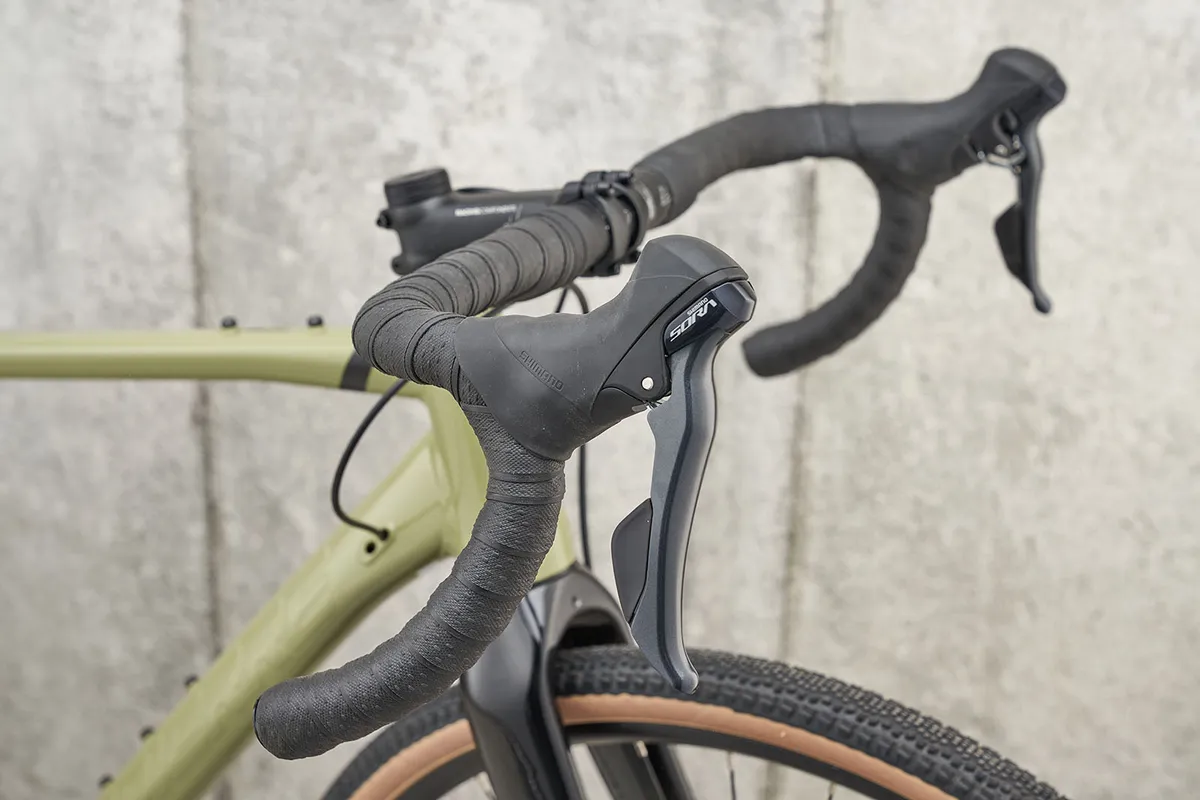
This equates to swift road-riding speeds, but less grip on the rough stuff. There’s a definite firmness on rougher surfaces.
On bumpy terrain, the lack of a clutch on the Sora-spec rear derailleur means you’ll soon be used to chain slap, and should arguably fit a chainstay guard to protect the frame.
I didn’t experience a dropped chain during testing, but it’s always a possibility with such chain slap occurring.
Mechanical disc brakes are never as effective as hydraulics, but the calipers here only move one brake pad, pushing the disc rotor into the other pad.
Even after many miles of bedding in, there was still a pause between the time of application and any meaningful braking force acting on the wheels. Much of the force then was dependent on lever pressure, and felt quite linear (as opposed to progressive, as you’ll find in more premium brake setups).
Even so, despite the spec limitations, the Lapierre Crosshill feels like a holistic creation, and it fundamentally all works together.
This makes it a fun bike to ride, and as long as the gradient allows, its reassuring handling can be exploited fully.
Lapierre Crosshill 2.0 bottom line

Lapierre hasn’t scrimped on features with the Crosshill 2.0 frameset, outfitting it with plenty of tyre clearance and mounts for everything you need on a gravel bike.
Although some might find it limiting, the workmanlike specification is ultimately quite likeable.
The bike looks good and feels good to ride, until gravity intervenes and throws an (understandable) spanner into the works.
As a first gravel bike, a do-everything commuter bike or budget adventurer, the Lapierre has much to commend it. It’s a good platform that will benefit from judicious upgrades in time, but can be enjoyed for what it is too.
Budget Road Bike of the Year 2023 | How we tested
Each of the bikes in our budget road category was tested over a series of weeks and plenty of miles by Robin Wilmott, one of our most experienced road, cyclocross and gravel bike testers.
Unlike our performance categories, these bikes were also assessed on how easy and enjoyable they are to live with.
They were tested for commuting, running errands and serving as an all-purpose workhorse to ensure not only are these budget bikes great value, but they’re also built to last.
Our Budget Road Bike of the Year contenders
- Marin Gestalt
- Lapierre Crosshill 2.0
- Cannondale CAAD Optimo 1
Thanks to…
Thanks to our sponsors, Lazer, FACOM tools and Band Of Climbers for their support in making Bike of the Year happen.
Product
| Brand | lapierre |
| Price | 1299.00 EUR,1199.00 GBP |
| Weight | 11.3500, KILOGRAM (M) - |
Features
| Fork | Lapierre carbon blades, alloy steerer |
| br_stem | Lapierre 3D 6061 alloy |
| br_chain | KMC X9 |
| br_frame | Crosshill Gravel Supreme 5 Alloy |
| Tyres | WTB Riddler, tan wall, wire bead, 700 x 37c |
| br_brakes | Tektro MD-C510C mechanical disc, 160mm Shimano RT-30 rotors |
| br_cranks | FSA Tempo Adventure 46/30T |
| br_saddle | Selle Royal Vivo |
| br_wheels | Lapierre branded hubs, WTB i23 32h rims |
| br_shifter | Shimano Sora R3000 9sp |
| br_cassette | Sunrace CSM90 11-34T |
| br_seatpost | Lapierre zero setback alloy, 27.2mm |
| br_gripsTape | Lapierre elastomer tape, 3mm thick |
| br_handlebar | Lapierre alloy gravel bar, 44cm, 16 degree flare |
| br_bottomBracket | Threaded, square taper |
| br_availableSizes | XS, S, M, L, XL |
| br_rearDerailleur | Shimano Sora R3000 GS 9sp |
| br_frontDerailleur | Shimano Sora R3000 |
